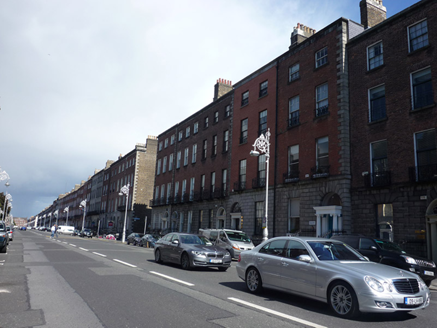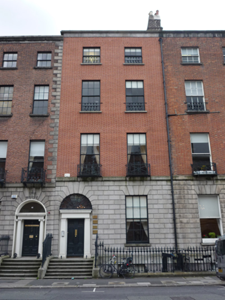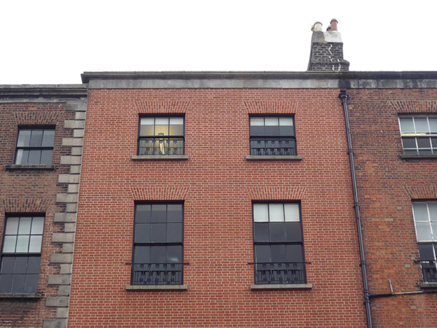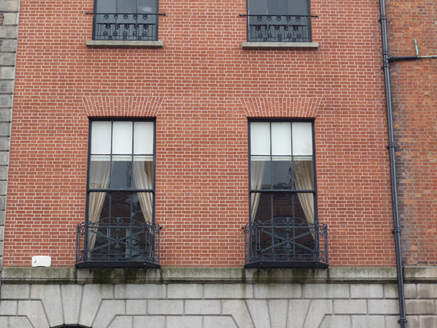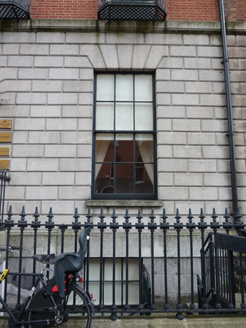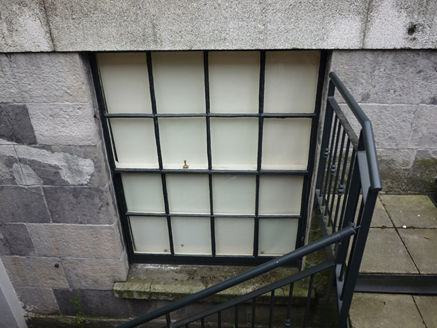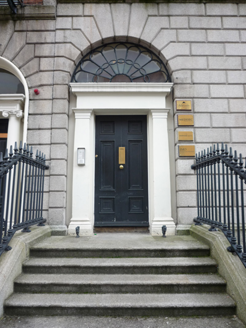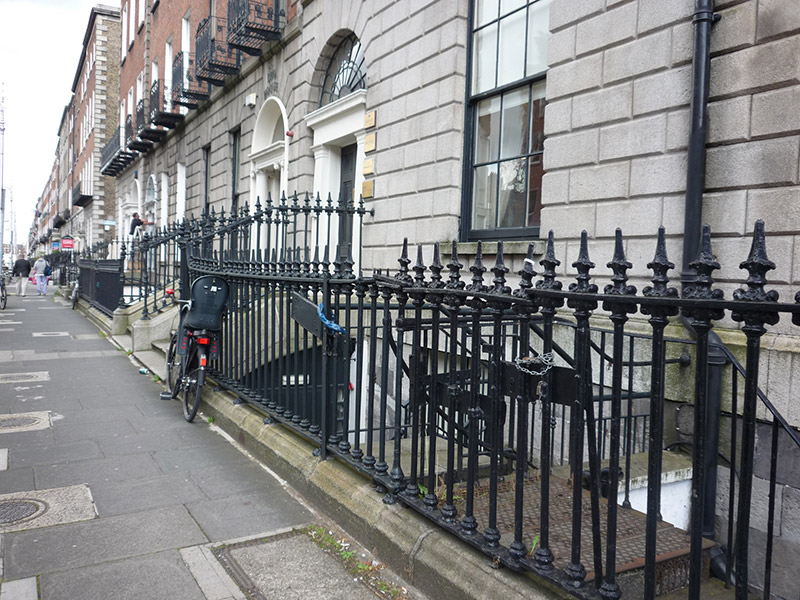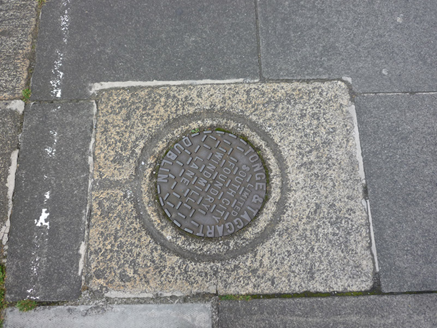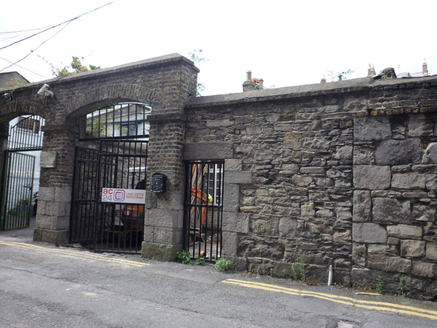Survey Data
Reg No
50930139
Rating
Regional
Categories of Special Interest
Architectural, Artistic
Original Use
House
In Use As
Office
Date
1815 - 1835
Coordinates
316502, 232886
Date Recorded
28/08/2015
Date Updated
--/--/--
Description
Attached two-bay four-storey over basement former townhouse, built c. 1825, as a pair with No. 12 (50930140). Three-storey return to rear (east) elevation. Now in use as office. M-profiled slate roof, hipped to north of west span, concealed by ashlar granite parapet with moulded cornice and lead-lined blocking course. Shouldered brick chimneystacks to party walls, rendered and chimneystack projecting to east elevation, all having lipped yellow clay pots. Lead-lined square-headed dormer to rear (east) pitch of roof. Parapet gutters with cast-iron hopper and downpipe to south end and rear (east). Red brick walling in Flemish bond, rusticated ashlar granite walling to ground floor and tooled ashlar limestone walling to basement beneath granite plinth course. Rendered walling to rear (east) elevation. Square-headed window openings with brick voussoirs (to upper floors of west elevation) and masonry sills. Decorative cast-iron balconettes to first-floor windows and cast-iron guard rails to second and third floors. Largely six-over-six timber sliding sashes with cavetto horns and historic glass, three-over-three to third floor and dormer, eight-over-eight to basement. Some Wyatt-style windows to rear (east). Round-headed door opening with recessed rendered doorcase with moulded cornice and frieze carried on engaged Doric pilasters, iron petal fanlight and raised-and-field timber panelled door with beaded-muntin. Granite entrance platform with cast-iron boot scrapers, approached by six nosed granite steps, flanked by cast-iron railings with decorative finials and corner posts over carved granite plinth, enclosing basement well to south. Steel steps to basement well. Three coal-hole covers to pavement. Recent steel and concrete steps to basement, with replacement door beneath entrance platform in plainly detailed surrounds. Brown brick segmental-headed carriage-arch with raked coping, dressed stone base and plinths, and cast-iron gates to eastern boundary on Lad Lane Upper, abutted to north by rubble stone wall with raked coping and square-headed pedestrian opening with dressed stone surrounds and cast-iron gate. Two-storey rubble stone mews building being remodelled at time of survey.
Appraisal
Nos. 11-12 (50930239-40) are grander in scale, compared to the neighbouring buildings, having higher floor and parapet levels and larger openings. No. 11 is enhanced by historic windows and glass, whilst the carriage-arch and mews building, addressing Lad Lane Upper, contribute to the setting. Although the street is largely homogeneous in character, the variations in detailing, proportions and scale are indicative of the speculative nature of development. Developed in conjunction with the east and south sides of Fitzwilliam Square, the eastern side of Fitzwilliam Place was completed by 1836, with the exception of five houses to the south-end. Built in pairs or groups, the house designs emulated those of Fitzwilliam Square South.
